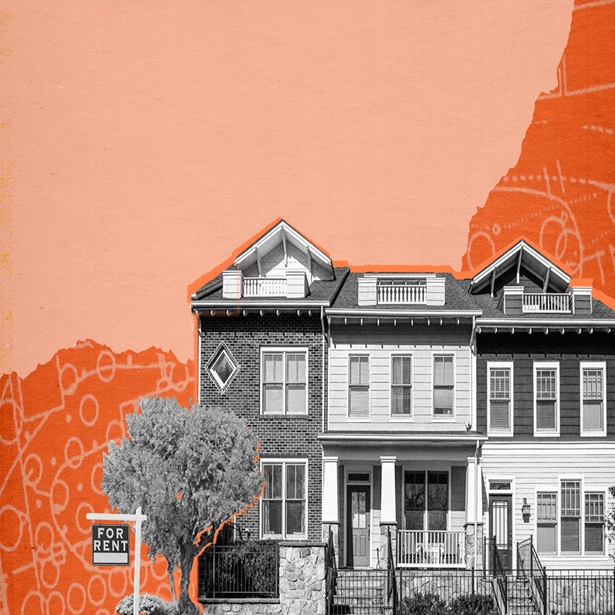State Policymakers Examine Bipartisan Efforts to Boost Housing
Discussion at Pew forum focuses on ways to increase limited supply and affordability
This video is hosted by YouTube. In order to view it, you must consent to the use of “Marketing Cookies” by updating your preferences in the Cookie Settings link below. View on YouTube
This video is hosted by YouTube. In order to view it, you must consent to the use of “Marketing Cookies” by updating your preferences in the Cookie Settings link below. View on YouTube
State policymakers of all political stripes are seeking ways to address the housing supply and affordability challenges that Americans face as a national shortage contributes to soaring costs. On Feb. 22, The Pew Charitable Trusts hosted a session entitled “States Construct Bipartisan Consensus to Boost Housing” in Washington, D.C. During the program, state executives discussed actions they are taking to improve land-use planning and strategies to make homes more widely available and affordable.
The first panel examined the broad problems and the difficult issues facing policymakers. Chris Dorrington, director of the Montana Department of Environmental Quality and chair of the Governor’s Housing Task Force, was joined by RuthAnne Visnauskas, commissioner and CEO of New York State Homes and Community Renewal, the state agency responsible for administering housing and community development programs. They detailed the damage that housing shortages are doing to their states, and how they’re seeking to eliminate the regulatory barriers to allowing enough homes for everyone.
“Housing is not a partisan issue, it’s not even a rural or urban issue, people need to live in a home they can count on,” Dorrington said. The task force he led recommended major reforms to zoning and permitting in Montana, and the legislature passed the bulk of them. This successful initiative gained national attention both for its breadth and for the buy-in from Montanans across the political spectrum.
The country has a shortage of an estimated 4 million to 7 million homes and half of renters are spending 30% or more of their income on rent. Research by Pew shows broad support for policies intended to boost housing affordability and availability across political party, region, race, income, and gender.
Visnauskas, speaking of efforts in New York, highlighted the importance of finding data-driven solutions and the need to clearly communicate intended goals to address concerns: “I think some of our key lessons are showing people what it means, rooting our conversation in data—understanding that people are afraid of change,” she said.
For the second panel, Oregon Governor Tina Kotek (D) sat down with Susan K. Urahn, Pew’s president and CEO, to discuss the governor’s significant bipartisan housing achievements. “Housing is a very bipartisan issue,” Kotek said. “It’s an opportunity to come together and do public policy that is a true partnership between the state and local government.”
As Speaker of the Oregon House in 2019, Kotek was the chief sponsor of the nation’s first enacted “missing-middle” housing zoning reform law at the state level. That bill allowed town houses, two-to-four-unit buildings, and accessory dwelling units on most residential lots in Oregon’s cities and towns. This type of housing consistently costs less than detached, single-family housing. It also is more affordable for first-time homebuyers and makes more efficient use of land, which helps to prevent sprawl and reduce commutes.
On her first day as governor at the start of 2023, Kotek declared a homelessness state of emergency and created a bipartisan housing production advisory council tasked with developing a policy framework to meet construction targets. She set a housing production goal of 36,000 homes per year.
“We visited every county and the number one issue people talked about was housing,” Kotek told Urahn. “What we heard over and over again was ‘We want to do things but we don’t have clarity, we want to do things but we get too much pushback’ so there was a real role for the state to come in and say ‘Hey, if we set some statewide parameters with some local variation we are going to make more progress.’”
Lessons learned
The government officials speaking at the program shared important takeaways. Among them:
- Housing availability is a bipartisan issue. Regardless of political affiliation, state policymakers are working across the aisle to find solutions to the housing challenges facing their communities. The importance of better access to housing transcends political affiliation and the general goal has broad support.
- The housing shortage is affecting all regions of the country, hurting affordability and local economies. Nearly every state is grappling with the need for more housing. Since 2019, state-level efforts to reform restrictive zoning and simplify permitting have grown sharply nationwide. In recent years, a range of states have passed legislation that would allow for more housing production, including California, Florida, Maine, Massachusetts, Montana, Oregon, Texas, Utah, Vermont, and Washington.
- Desired housing outcomes must be clearly communicated. Participants emphasized the importance of listening to the needs of communities and showing the impact of improving the affordability and availability of housing.
The event allowed participants and Pew researchers an opportunity to hear how state officials are working to enable much-needed housing to be built in communities across the country and some of the strategies that are showing results.
Chase Hatchett works on The Pew Charitable Trusts’ housing policy initiative.













